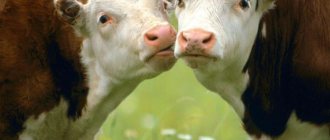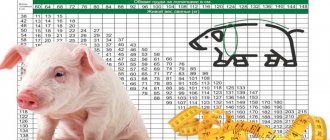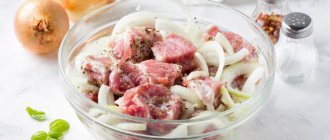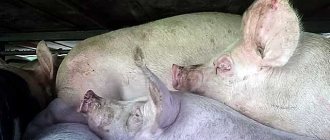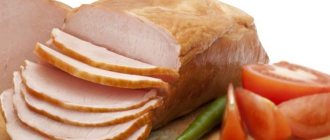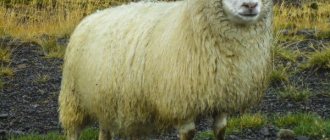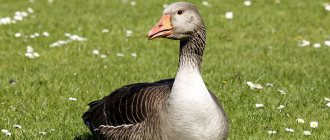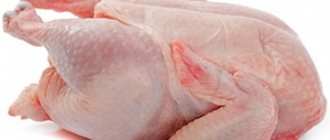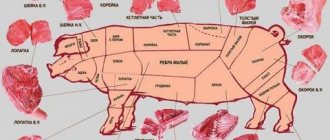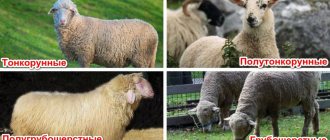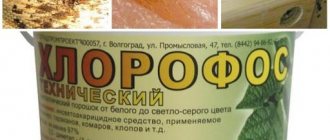The idea that cutting and deboning pork is the same thing is wrong. The first is to separate the pork carcass into parts. The second is the process of separating meat from bones, which can be mechanized or manual. Accordingly, the procedure is carried out differently at home and at industrial enterprises. The technique and types of methods also differ depending on the purpose. Properly carried out, they guarantee maximum yield of meat after slaughter and its high quality.
Definition
After slaughter, pig carcasses are bled. This procedure is necessary in order to improve the quality of the resulting meat. After bleeding, the carcasses are usually divided into half carcasses. Then they are sent either to their own workshops for processing meat products or sold to other enterprises of such specialization.
Sometimes you can find already cut meat on the wholesale market. But such a product is often unreasonably expensive. Therefore, even small entrepreneurs prefer to purchase ordinary carcasses and half-carcasses and subject them to further processing on their own. This allows you to save on raw materials.
The next operation after bleeding and cutting the carcasses into half-carcasses is deboning. This is the name for the procedure in which meat is separated from the bones. When deboning pork, it is important to strictly follow all the required technologies. Otherwise, the meat yield will decrease significantly, and consequently the enterprise will suffer losses.
Preparation
When using this technique, the method of separating meat from bones may depend on:
- age of the animal;
- the degree of his fatness, etc.
At the first stage, half carcasses are divided into parts. The number of the latter depends on the type of farm animal. For example, beef half-carcasses are divided into 7 parts, lamb - into two cuts. Pigs are relatively small in size. Therefore, their half-carcasses are usually divided into 3 parts.
Raw meat and its characteristics
For the production of semi-finished products, sausages and packaged products in Russia and Ukraine, beef, pork, chicken and, less often, lamb, horse meat, goat meat, and venison are most often used.
Meat is a collection of bone, muscle, connective, fatty and nervous tissues, as well as blood and lymphatic vessels. Its components are proteins, fats, minerals and water. Due to the presence of proteins in it, the product has high nutritional value, so proper deboning of the meat is very important, when the standing pulp is preserved as much as possible when it is separated from the bones.
Each type of meat has a different tissue ratio, for example, pork has a higher percentage of fat than beef. In general, the chemical composition of the product is influenced by the breed, age, sex and fatness of the animal. A small amount of fat in meat increases the value of the product. Thus, the most delicious piece is considered to be marbled meat, the muscle fibers of which have a fatty layer.
Manual technology
Next, begin the actual deboning of the pork. The following rules and regulations must be observed when performing this procedure:
- The shoulder, shoulder, thigh and pelvic parts of the carcass are separated in such a way as not to disrupt the integrity of the muscle mass of the meat;
- the lumbar and dorsocostal parts are cut off, observing the boundaries of the longissimus muscle, subscapularis, hem and brisket;
- the dorsal costal part is either cut off in a layer and then divided, or semi-finished products are directly isolated.
Carefully debon the pork, taking care not to damage the muscle tissue. According to the regulations, after this procedure there should be no cuts more than 10 mm deep on the meat.
Hand deboning example: back cut
Each specific part of the carcass must be processed in compliance with certain technologies. For example, the rear cut of pork is deboned as follows:
- place the ham on the table with the subcutaneous side down, the pelvic bone towards you;
- cut the meat from the inside of the pelvic bone;
- by moving the knife away from you, cut the meat from the ischium;
- cut the meat from the outside of the pelvic bone in the direction from the pubic symphysis to the ilium;
- Take the pelvic bone with your left hand and cut the tendons between it and the femur.
All these operations are performed by moving the knife first away from you and then towards you.
Further:
- an incision is made on the underside of the pubic ischium and the meat is stripped from the ilium;
- the pelvic part is taken by the pubisciatic fusion, and holding the meat with the right hand, the bone is removed with the left;
- turn the right side of the rear cut with the shin bone towards you and cut off the meat from its left side;
- separate the meat from the right and left sides of the fibula;
- separate the tibia from the femur;
- cut the meat from the left and then from the right side of the thigh bone;
- Place the thigh bone vertically and completely separate the meat from it.
On the left side, the meat is first cut off from the ilium and separated from the pubic ischium. The tendons between the femur and pelvic bones are then separated. Next, the meat is trimmed from the underside of the pubic ischial part. The pelvic bone is removed with a jerk and then deboned in the same way as on the right side.
Working with the shoulder part of the carcass
Now we’ll talk about the boning technique, which is used by professionals, but it is also suitable for home use. We start work with the scapular part.
We place the shoulder blade (the left one first) with the forearm facing us, with the inside facing down. Cut the flesh from the elbow to the shoulder joint, moving the blade towards you. Then carefully separate the meat on the left side of the piece. Holding the bone, we process the piece of half carcass on the right. We move the knife away from ourselves. We remove the meat from the radius bone on the right, and from the ulna bone on the left. Here the knife is pointed towards itself, starting cutting from the place where the bones connect.
Read also Clivia leaf under a microscope
Now you need to separate the shoulder bone from the rest. To do this, we cut the elbow. The muscles on both bones are completely removed. The remaining pulp on the bone during deboning should be minimal. It is permissible only in areas located between the bones.
Turn the piece over. The wide side faces the deboner. Now we remove the meat, trimming it and tearing it off at the same time. The cartilage in the shoulder blade is broken in the process. Then, by cutting the tendons in the shoulder, the head of the bone is processed. Holding part of the cut with your thigh and holding the shoulder bone with your left hand, sharply separate this bone from the muscles. We clean inside and outside.
The right shoulder blade is rolled in a similar manner.
Tools
Pork is deboned at enterprises using knives, most often made of carbon steel with the addition of vanadium, molybdenum, and chromium. Such tools are durable and strong. It is believed that only knives with a hardness of at least 57 units on the Rockwell scale are suitable for boning.
The handles of such tools should also be durable and comfortable for workers. In Russia, enterprises most often use boning knives with wooden handles. Such a tool allows you to perform the operation with the highest quality possible. Wooden handles do not slip when wet. In addition, these knives have good balance. However, in some countries it is prohibited to use tools with such handles for boning. This is explained by the fact that with such knives it is difficult to clean the area in the area where the blade adjoins the wood, as well as the rivets. As a result, harmful microorganisms can grow in these places.
Mechanical deboning in large plants
Manual deboning technology for pork meat is usually used if the meat is intended for making minced meat for sale or, for example, for making dumplings. When producing sausages, half carcasses are processed using a different, simpler technology. Minced meat, since it contains more veins, in this case turns out to be of lower quality, but the labor costs when using this technique are small.
In such factories, meat is separated from bones either on a conveyor belt or by several specialists at once. The following technologies can be used for deboning pork:
- differentiated - each specific part is assigned to one deboner;
- differentiated vertical - the carcass slowly moves above the conveyor in a suspended state and is subjected to step-by-step processing by deboners;
- combined - used on parts of the carcass that are difficult to process and allows up to 50% of the meat to be left on the bones.
Also, enterprises can sometimes use conventional manual processing on a table by the efforts of one specialist. This method in this case is called extinguishing deboning.
Proper trimming of hams
Next, the deboning of the pork comes to the back of the half carcass. This includes the pelvic area, thigh, and lower leg.
The pelvic bone is separated from the right ham by cutting the muscles and tendons. Then the piece needs to be turned so that the tibia faces the deboner. We clean the fibula. Now, moving the knife carefully from top to bottom, we separate it and the femur.
We cut off the muscles of the femur on the left and right. After this, the remaining piece of the half carcass is placed on the table at an angle of 90 degrees and the bones are completely cleaned. The second ham is deboned in the same way. The more carefully the deboner works, the more meat obtained.
Also, boning of pork can take place without separating all the bones of a given part of the half carcass.
In small factories and at home, the half-carcass is sometimes divided into two parts rather than three. Then, from the front, where the ribs enter, the muscles of the lower back and neck are cut out, then the ribs are removed together. At the end, the shoulder blade is processed.
The back part is deboned from the lower back, the pelvic bone is separated, after which the meat is removed from the tibia and femur. This meat with bacon can be used for frying, stewing, boiling and any other culinary processing.
Read about culinary butchering in the article “How to properly butcher a pig.”
What equipment is used
When deboning pork, a finished product containing a certain amount of bones and sinews is obtained. Minced meat from meat processed in this way can have different quality. In this case, everything depends both on the qualifications of the deboners and on the type of equipment installed in the workshop.
Large enterprises use special automatic conveyor lines for deboning, including pork. Their use allows for maximum optimization of production. Also, when using them, losses during deboning of pork are reduced.
On the sides of the frame of such conveyors, removable table tops are fixed, which serve as staff work stations. The speed of the main conveyor belt of such equipment is adjustable. An additional conveyor for hides, bones and sinews is usually installed above the main conveyor. To collect the latter, a special hopper with a plastic collection container is intended. Once the latter is filled, it is simply removed and the bones are sent for processing into flour, which is then used as a food additive in raising farm animals.
Part of such lines usually, among other things, is an automated accounting system for the distribution and cutting of raw materials, to which scales are connected at three technological points:
- for incoming raw materials;
- bones and waste;
- meat after cutting.
Main two varieties
You may be interested in:Grape harvesting: ripening times and useful tips
Meat can be processed in this way using two technologies:
- manually;
- mechanical.
The first technique is usually used in small and medium-sized enterprises, for example, those specializing in the production of dumplings, pasties, smoked meats, etc. The second technology is used in large meat processing enterprises producing sausages, sausages and semi-finished products.
Pork deboning: meat yield
There should be practically no meat left on the bones after processing. The yield of this product depends primarily on the qualifications and skills of the deboner. At large enterprises, this indicator is determined by standards. The yield rates for meat and offal for beef and pork are shown in the table below.
| Product name/output | Beef (%) | Pork (%) |
| Meat | 73,6-70.5 | 71.6-62.8 |
| Bones | 22.2-25.1 | 13.4-11.6 |
| Lard | — | 13.6-24.4 |
| Cartilage and tendons | 3.2-3.4 | 0.6-0.4 |
| Losses | 1 | 0.8 |
The yield of meat when deboning pork from different parts of a half carcass can, of course, be different. Certain standards, of course, must be observed in this case. They are also indicated in special tables.
Of course, due to differences in the composition of meat on different parts of half carcasses, the resulting pulp after deboning is of unequal quality. This is one of the features of the procedure. For example, deboning shoulders, brisket, and back produces more low-grade meat than deboning other cuts. In this case, a lot of veins and cartilage remain at the exit.
How is it labeled?
The packaging of poultry MMO must contain the following information:
- image of the company's trademark;
- dates of manufacture and packaging;
- thermal state of the product (chilled or frozen);
- storage conditions;
- compound;
- energy value;
- GOST designation.
Such poultry meat must be transported with the markings “Perishable cargo”, “Keep away from moisture” and “Temperature limitation”. Polymer bags with a bag or corrugated boxes can be used as packaging for this product.
Zhilovka
This procedure is carried out at enterprises after mechanical deboning of pork or manually. When it is performed, coarse connective and adipose tissue is released from meat - veins, cartilage, small bones, large blood vessels, blood clots. Lymph nodes are also removed from the pulp.
During trimming, among other things, a procedure such as final sorting of pork is performed. When performing this operation, observe the following rules:
- the meat is cut into separate muscle groups;
- cut the muscles longitudinally into pieces weighing no more than 1 kg (for raw smoked sausages - 400 g);
- connective tissue is separated from pieces of meat.
At large enterprises, livery workers, as in deboning, usually specialize in different parts of the carcass.
Safety precautions
Boning meat requires caution and compliance with labor safety instructions on the part of the worker. The danger lies in possible cuts during manual cutting and electric shock during mechanical deboning.
For example, when working with a knife for himself, a deboner runs the risk of getting cuts on the stomach while cutting up a carcass. When deboning the scapula, neck, or stripping the pelvic part, when the thumb and forefinger of the left hand go deeper into the meat, there is also a possibility of damage to the limb.
Therefore, the worker must be provided with certain protective equipment:
- an apron;
- chain mail and cotton gloves;
- boots;
- helmet;
- oversleeves.
Thus, a two-fingered metal glove is designed to protect the left hand, and a chain mail apron or apron ensures the safety of the body.
